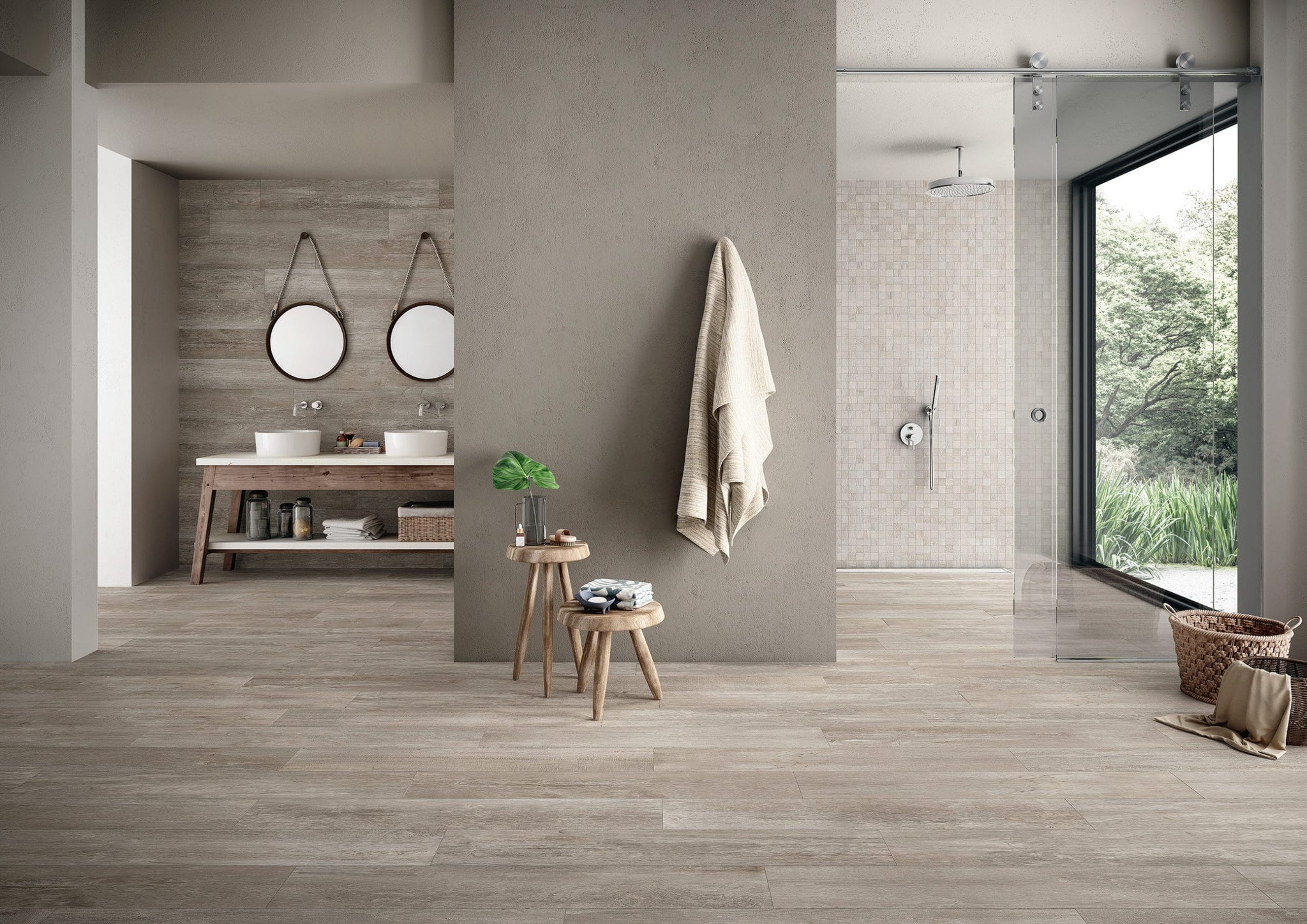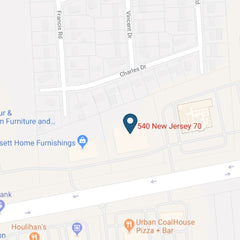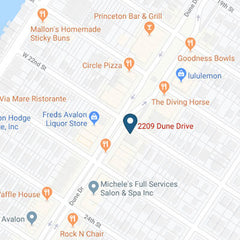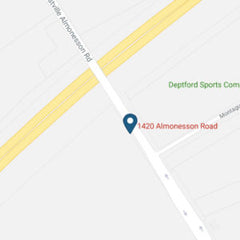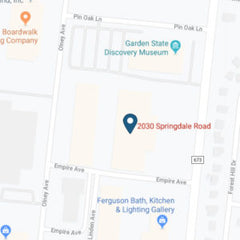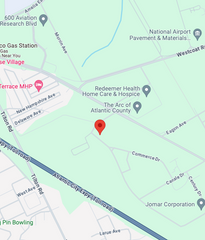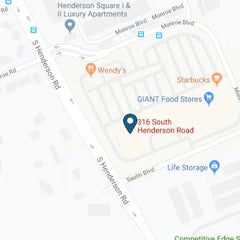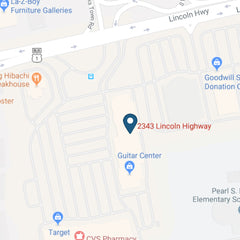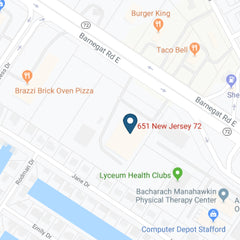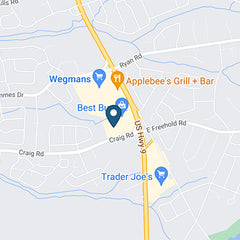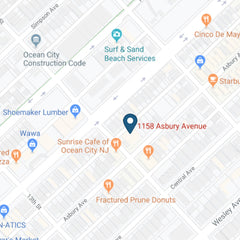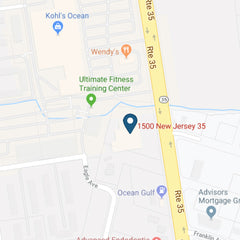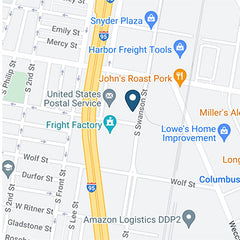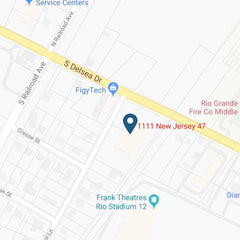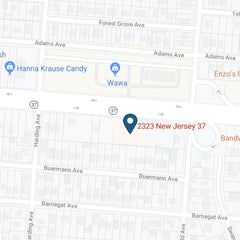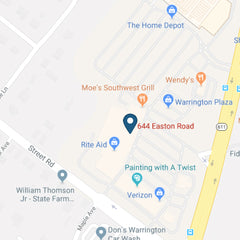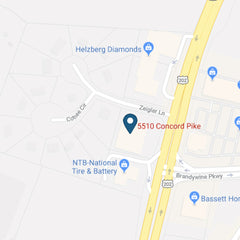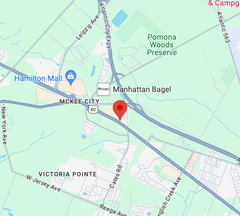The appearance of hardwood flooring is a classic style that continues to withstand changes in trends, but there are some drawbacks to this traditional flooring material. The potential for damage to a hardwood floor, whether solid or engineered, is certainly greater than with certain other flooring materials. Spills and scratches can mar the look of a beautiful hardwood floor if you’re not careful.
Best solid hardwood floor alternatives
It’s incredible how many options exist today to achieve that beautiful hardwood floor look without actually using real wood. These alternatives to wood floors are ideal for spaces where real wood might not be the best choice. Some of the top picks include:
-
Engineered hardwood
-
Wood-look tile flooring
-
Luxury vinyl planks (LVP)
-
Laminate wood-look
Let’s explore what makes these the best wood-look flooring options as alternatives to traditional hardwood flooring.
1. Engineered hardwood flooring (real hardwood veneer + stabilized core)
While there are lots of flooring options out there, nothing quite matches the warmth and charm of a wooden floor. Wood has a timeless beauty and a touch of luxury that’s hard to beat. If you love the look but are concerned about wear and tear or high maintenance, you may want to consider engineered hardwood flooring. It’s a great option!
|
Feature |
Engineered Hardwood |
|
Avg. Cost (Per sq. ft.) |
$4.99 to $12.99 (installation not included) |
|
Durability |
Suitable for high-traffic areas and any room in the house |
|
Water resistance |
Water resistant, but not waterproof. Standing water can cause damage |
|
Cleanability |
Easy to clean. Use dry mop or vacuum regularly. Clean with damp mop, but do not saturate. Mop spills immediately |
|
Lifespan |
20-80 years, depending on thickness; requires refinishing every 10-15 years, depending on thickness |
|
Suitability for DIY |
Often comes with click-lock or tongue-in-groove systems for easier installation |
Engineered hardwood flooring ideas
2. Wood-look tile flooring
These days, porcelain is crafted to look like natural materials like wood or stone so closely that it’s nearly impossible to tell the difference. For example, wood plank porcelain resembles real wood flooring, but it offers the added benefits of being extremely durable and easy to maintain. Of course, it has its pros and cons, but it’s one of the alternatives to hardwood flooring worth considering.
|
Feature |
Wood-Look Tile |
|
Avg. Cost (Per sq. ft.) |
$2.99 to $12.99 |
|
Durability |
Extremely durable and does not scratch or show signs of wear with foot traffic |
|
Water resistance |
Incredibly water resistant and will not swell or warp when exposed to moisture |
|
Cleanability |
Very easy to maintain; a regular mop and static broom or vacuum will work fine |
|
Lifespan |
20 to 50 years |
|
Suitability for DIY |
Difficult to install, professional installation recommended |
Wood-look tile ideas
Shop All Wood-Look Tile Flooring
3. Vinyl flooring that looks like wood
When it comes to vinyl flooring you have two main options: vinyl sheet or vinyl planks/tile (SPC & WPC). While vinyl sheets can be a budget-friendly choice, they often appear less realistic and can be more challenging to repair if they get damaged. However, it’s a wood-like flooring option to consider if you want the convenience of easy maintenance, including excellent water resistance.
|
Feature |
Wood Plastic Composite (WPC) Vinyl |
|
Avg. Cost (Per sq. ft.) |
$1.99 to $6.49 |
|
Durability |
Handles daily wear with ease. Doesn’t easily dent, scratch, stain, or fade |
|
Water resistance |
Waterproof; ideal for bathrooms, kitchens, mudrooms, basements |
|
Cleanability |
Easy cleaning by sweep or mop, no waxing or polishing required |
|
Lifespan |
15 to 25 years |
|
Suitability for DIY |
WPC planks and sheets are relatively easy for DIY as they use the floating installation method. The key is to prepare the subfloor properly |
Wood-look vinyl flooring ideas
4. Laminate flooring that looks like wood
Laminate flooring stands out for its durability, affordability, and easy maintenance. Its waterproof feature makes it a great option for areas where other wood-like flooring options might struggle. Its printed designs allow you to achieve the exact look you want, making it an exceptional choice for homeowners who appreciate the beauty of hardwood while seeking added convenience.
|
Feature |
Wood-Look Laminate |
|
Avg. Cost (Per sq. ft.) |
$2.49 to $4.99 |
|
Durability |
Extremely durable, resistant to damage |
|
Water resistance |
Water resistant and can withstand topical moisture. Proper installation helps keep water from seeping through the planks |
|
Cleanability |
Easy to clean with a damp mop, but don’t drench with water |
|
Lifespan |
15 to 25 years |
|
Suitability for DIY |
Usually has click-lock systems for easy install and does not require glue or nails. However, for full waterproof protection, it’s best to use professional installation |
Wood-look laminate flooring ideas
Installing wood-look flooring
As with any home renovation project, installing wood-look flooring options is considered a construction project. Please be aware that there is a potential for noise, dust, and material odors during the installation process. Our installers will do their best to contain any mess created during the installation process. Additionally, please note that your access to the space will be limited during the installation, and you may be asked to stay out of the space for a period of time afterward.
Frequently asked questions
What is the best alternative to hardwood floors?
The best alternatives to hardwood floors are vinyl plank, laminate, and wood-look porcelain tile, each offering distinct advantages based on your lifestyle needs. Vinyl and laminate are budget-friendly and easy to install, while porcelain tile provides unmatched durability and longevity, ideal for high-traffic or moisture-prone areas.
What’s the difference between hardwood vs engineered hardwood flooring?
Unlike regular hardwood flooring, which is made from planks of wood directly from a tree, engineered hardwood has several layers. The inner layers are made of plywood, fiberboard, or hardwood, making the product more stable, while the top layer features a beautiful, real hardwood veneer,
Want to know more about the differences between engineered hardwood and other flooring options? Learn more about this hardwood flooring alternative.
What’s the difference between engineered hardwood vs LVP vs laminate wood-look flooring?
Engineered hardwood resembles real wood in appearance and texture and can even be refinished. However, it generally costs more than Luxury Vinyl Plank (LVP) and laminate flooring, and it requires a bit more care.
LVP is highly durable and waterproof, providing the appearance of hardwood with additional protection against moisture and wear. Plus, it features a click-lock system that makes installation easy for DIY enthusiasts.
Laminate flooring is an excellent, budget-friendly choice that mimics the look of hardwood due to its photographic layer and protective wear layer. It’s also easy to install with a click-lock system. However, it can swell and become damaged if exposed to excessive moisture.
Engineered hardwood has a real wood veneer on top of a stable core, making it more resistant to moisture and perfect for basements or concrete floors. Learn more about the differences between laminate and engineered hardwood.
